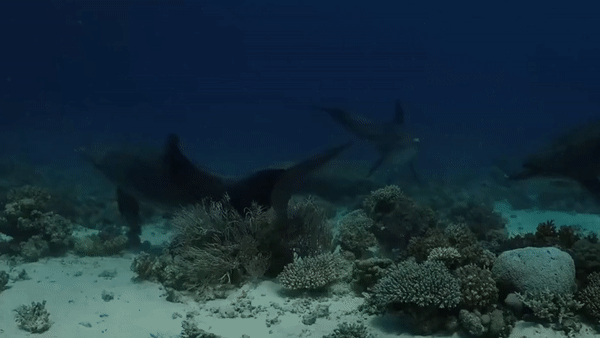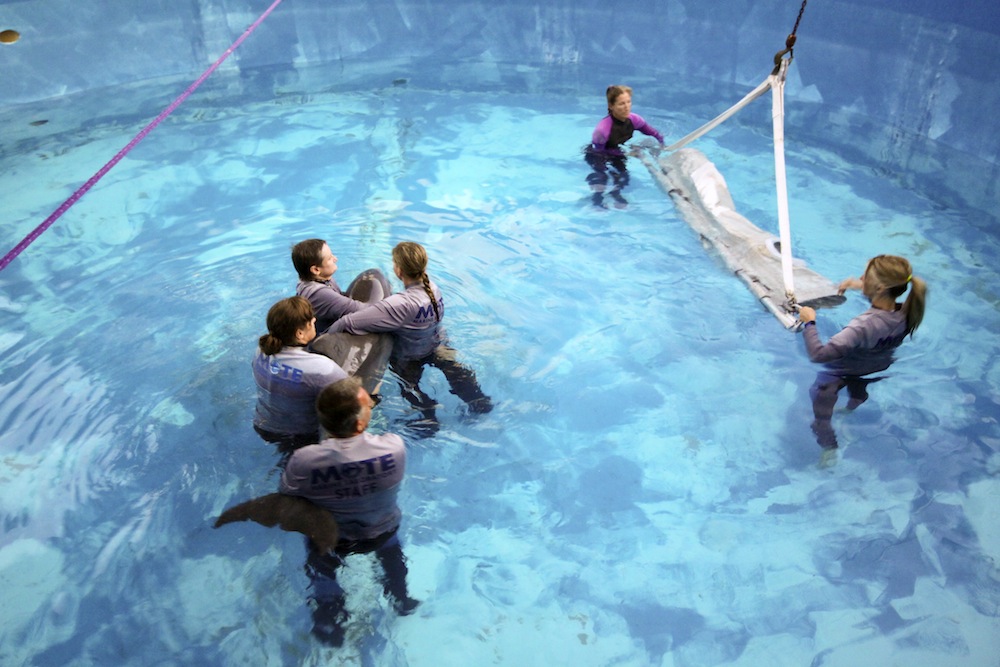When you purchase through link on our site , we may earn an affiliate commissioning . Here ’s how it bring .
Nearly 900 all in dolphins have wash up on the beaches of northern Peru since February . Autopsies have revealed zephyr bubbles and blood in their venous sinus , indicating they suffered from " the bends , " or decompression unwellness , after a panic , speedy rising to the ocean ’s surface . If this is the case , what is spook so many mahimahi , and is that why they drop dead ?
Marine biologists initially suspect that a form of submersed sonar used by fossil oil and gas prospectors might have frightened the mammals , which use acoustical signal to communicate and find prey ; what the dolphin would have perceive as flashy bunce may have caused them to try and escape to the surface , only to meet painful deaths . acoustical trauma has causedmass whale and dolphinfish deathsin the past times , and oil companies are currently prospect off the sea-coast of Peru .

At least 877 dolphins have washed ashore in Nothern Peru since February.
However , this week , another clue has complicated the image : The carcass of some 1,200 pelicans and other seabirds washed ashore . Sonar would n’t have killed them .
" It ’s not out of the kingdom of theory that the mahimahi had a run - in with seismal examination or sonar , andthe birdshad a runnel - in with something else , " Sue Rocca , a marine biologist at the Whale and Dolphin Conservation Society , toldLife ’s Little Mysteries . " But it ’s more potential that the two events are connected . "
The dolphins and birds may both have eat the same poison fish , for instance . According to Rocca , toxicology study on fish in the area could expose if they were poisoned by domoic acid from an algal salad days . Algal bloom can be worsened bywarming sea surface temperature — which have of late been recorded in the easterly Pacific — and by pesticide knock down into the ocean .

More than 1,000 pelicans and other seabirds have washed ashore in Peru this week.
Alternatively , some experts suspect the marine animate being may have died of a viral transmission . Paul Nachtigall , director of the Marine Mammal Research Program at the University of Hawaii , say the case seem similar to a mass dolphin stranding along the East Coast of the U.S. some 30 years ago , when the dolphins were found to be infect with morbillivirus , a killer related to measles . Birds can be infected with a variation of this virus also . According to Rocca , the key enquiry is : " Can the same stock infect both ? "
However , neither the poisoning nor a viral disease theory account for the autopsy grounds that at least some of the dead dolphins suffer from the bends . Only 12 autopsies were performed out of 877 dolphin carcasses , so it is possible that the sample distribution was n’t representative , Rocca said . Judith Denkinger , a marine life scientist at the Universidad San Francisco de Quito in Ecuador , enunciate the acoustical impacts resulting from seismic surveys might have harm the pelican indirectly by kill the fish — which can also suffer from acoustic trauma — that serve as the raspberry ’s primary solid food source . However , if starvation defeat the pelicans , their cadavers would probably have been perceptibly more bony than they were , the scientists pointed out .
No undivided theory account for the passel deaths of both metal money , and the scientist state the Peruvian government must continue its probe . Whatever the answer , the bottom line is that there are many ways in which human activities harm the marine ecosystem , Rocca say . " It ’s not just one affair that these animate being have to deal with . Noise pollution , chemical pollution , shaping pollution — these have accumulative impacts . "

Dolphin deaths in the Gulf of Mexicolast year have been traced to the 2008 BP petroleum spill , as oil photo can bit by bit destroy dolphin ’s immune system , leaving them susceptible to epidemics . life scientist at the International Fund for Animal Welfare ( IFAW ) are still investigating the cause ofmass dolphin strandings on beaches in Cape Cod , Mass. ,in January and February and again in April . In full , 214 uncouth dolphin became trapped by low-toned tides in the arena and died this yr , compare with 10 or 12 stranded dolphin found in the area in a typically class , say Brian Sharp of the IFAW .
" We ’re trying to count on out why this larger radical of brute came in so close to shoring and spent so much time in this area . There are so many unlike factors . Was the water temperature warmer ? Were their prey lurch to a different surface area ? The oceans are so dynamical that seek to narrow it down to one cause , we just do n’t know what all the other pieces are doing , " Sharp said .
As Rocca put it , " This is just a crap year for dolphins . "

















